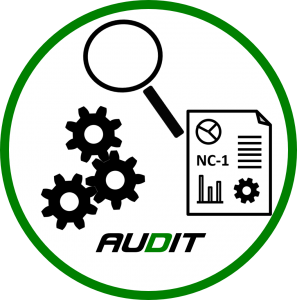Can Your Environmental Audit be done Remotely?
The regular environmental audits are an important part of an Environmental Management System & help to keep an organisation on track in managing its impacts & risks.

Usually the audit is done actually on-site, walking around, viewing files, speaking to staff. With many business premises closed down & workers confined to home, you may be concerned about keeping the audit programme up & running. Should you be doing your internal audits? What happens with the annual surveillance visit from the certification body?
Rather than everything grinding to a halt, during these challenging times, it’s better to do something & keep up the momentum of your audit programme. Remote audits – which are conducted partially or completely off site, using technology to support the auditor – are now being offered. Who knows, we may find this new way of working may be suitable in the future as well.
I can help you prepare for a remote audit.
Logistics & Technology
Unsurprisingly, a remote audit will use technology, instead of the auditor being there in person.
Systems like Zoom, Teams or GoToMeeting are really useful – they allow parties to see each other, rather than just relying on the telephone. If broadband is poor, then telephone conferencing is an alternative (though video links are much preferred).
The inbuilt camera in your laptop will suffice for the meetings & interviews; do try to use headphones ideally with a microphone, to improve sound quality.
For site walkabout, your phone or laptop can suffice. A 360 degree camera would be even better.
Set up a room where you’ll conduct (most of) the audit – make sure the technology works & get hold of files, documentation, records, links to your EMS etc. Test out your technology beforehand, particularly wifi (as you may need to carry your equipment around the site).
What you Need on the Day
Staff – who does the auditor need to speak to? These can include:
- The Environmental Manager or whoever is responsible for the EMS – they should be available for the whole of the audit.
- Key staff who have a role in the EMS, e.g. operations, HR, finance, top management, logistics, procurement etc. They can join a conference (video) call or phone in separately when needed.
- Top management should also be available for the opening & closing meetings.
Documentation – much of your core EMS documentation should be easy to retrieve & email to the auditor. Typically, documentation needed to be seen includes: Environmental Policy, EMS Manual, audit reports & Corrective Actions Log, Aspects & Impacts Register, Compliance Register, Management review minutes and actions.
Records typically needed include Duty of Care, F-Gas checks, training & communications. Hopefully these are available electronically, as paper records may be a challenge to retrieve.
Tour of the site – most audits involve a tour of the site, to view activities, equipment & operational behaviours. This should be able to be done with a camera or phone.
Of course, if the site is closed, then this should be picked up at the next audit.
Common Challenges of the Remote Audit
- Auditor can’t see the site & can’t assess ‘Operational Control’. Have a good camera/phone & take this all around the site to see the key activities, equipment, waste/materials storage etc.
- The site is completely closed. This is more challenging, but if we really can’t see around, changing the scope of the audit can be done – operational control can be covered at a later audit.
- Signing off non-conformities from previous audits. This can be an issue & should be discussed with your auditor or certification body.
- Documentation & records – if these are not accessible remotely (e.g. cloud storage), then try to access them in advance of the audit (is someone on-site that can retrieve them?).
- Interviews with other staff – while the Environmental Manager may be comfortable speaking by video, other staff may be less so, especially if they’re in the same meeting room as the boss. Try to make them comfortable, they could phone in separately (maybe sitting alone).
- Technology problems – discuss with the auditor in advance as to what technology is needed & test it out so you know how it all works.
- Scheduling challenges, especially if people are dispersed (e.g. working from home) or have been furloughed. It is important to get the audit programme well organised & in advance.
If the Audit Can’t Cover Everything
The scope of the audit is usually agreed in advance – but this may need to be changed if some things are inaccessible.
For internal audits, if you can’t cover everything (e.g. if the site is closed), it should be possible to redesign the audit programme, to cover items later in the year. With the exceptional circumstances of Covid-19, this approach is reasonable.
You may be going through your recertification audit or perhaps your annual surveillance visit needs to cover all parts of the standard.
If your certification auditor can’t complete all the requirements for recertification, then they’ll arrange to complete on-site activities later. The certification body should be able to extend your certificate (the International Auditing Federation has released guidance on this, allows for 3 month extension after restrictions have lifted). Speak to your certification body if you are concerned about your continued certification.
If you are concerned, please give me a call to discuss, so we can ensure you are well organised. These are difficult times & we’re all learning together, but if we’re prepared & adaptable, we should have a productive audit to meet your objectives.
Hear me speak – I was part of the expert panel for the IEMA webinar on remote auditing – we had 400 people attend!
See here for my write up of the webinar.
IEMA members can access a recording of the webinar here. The slides are also available
_____________________
Liked this post? Sign up for the Eshcon Newsletter.
